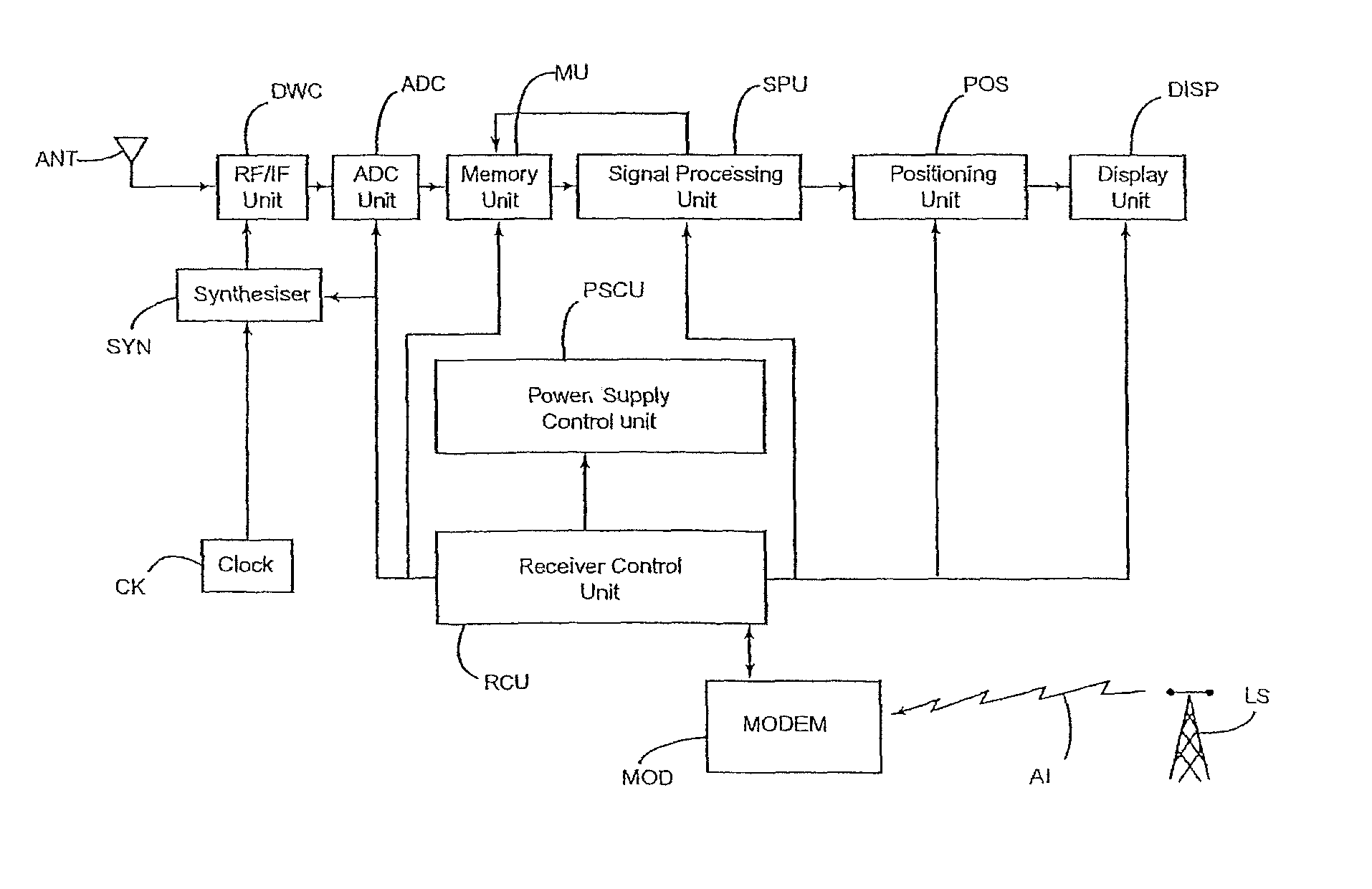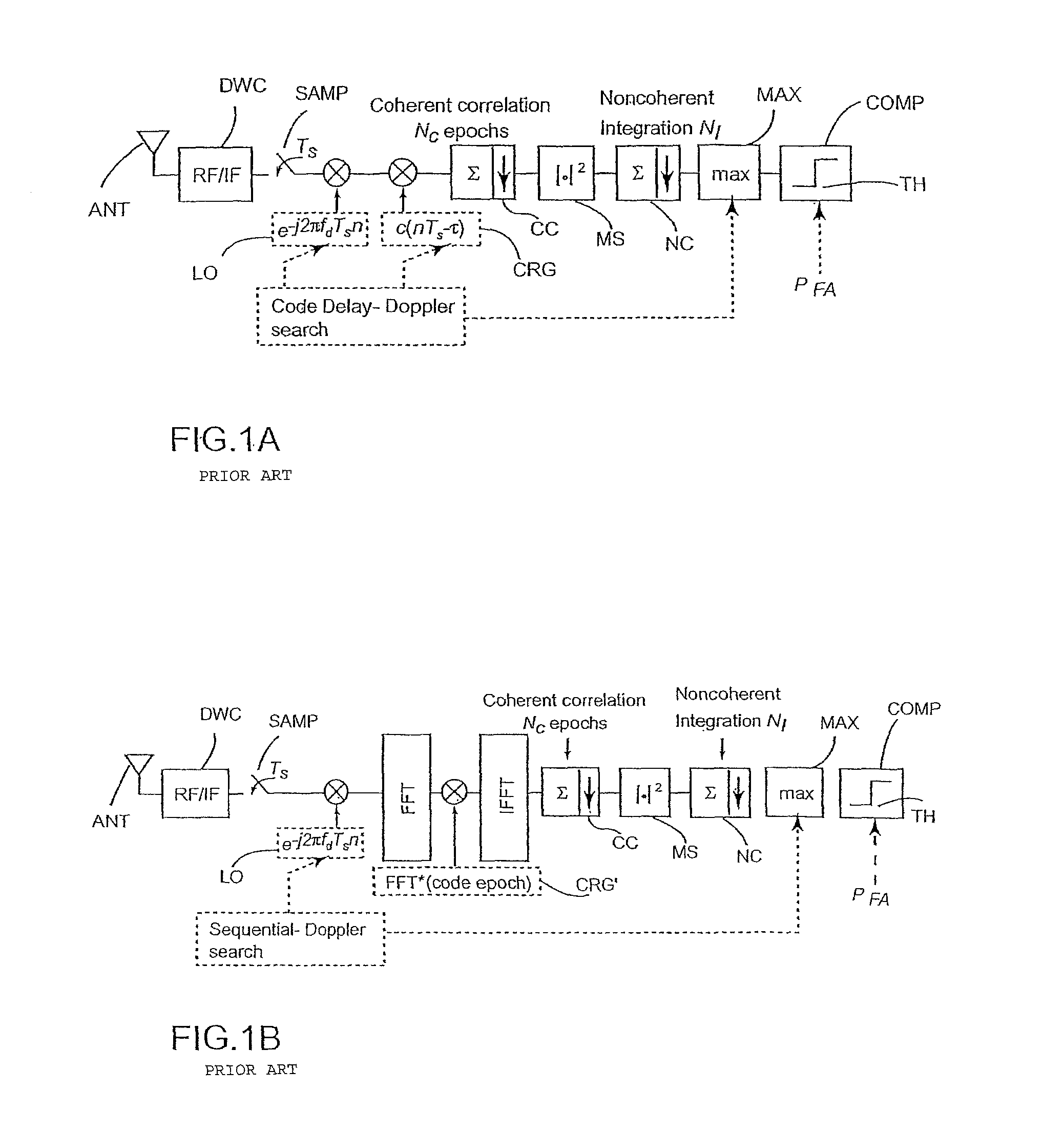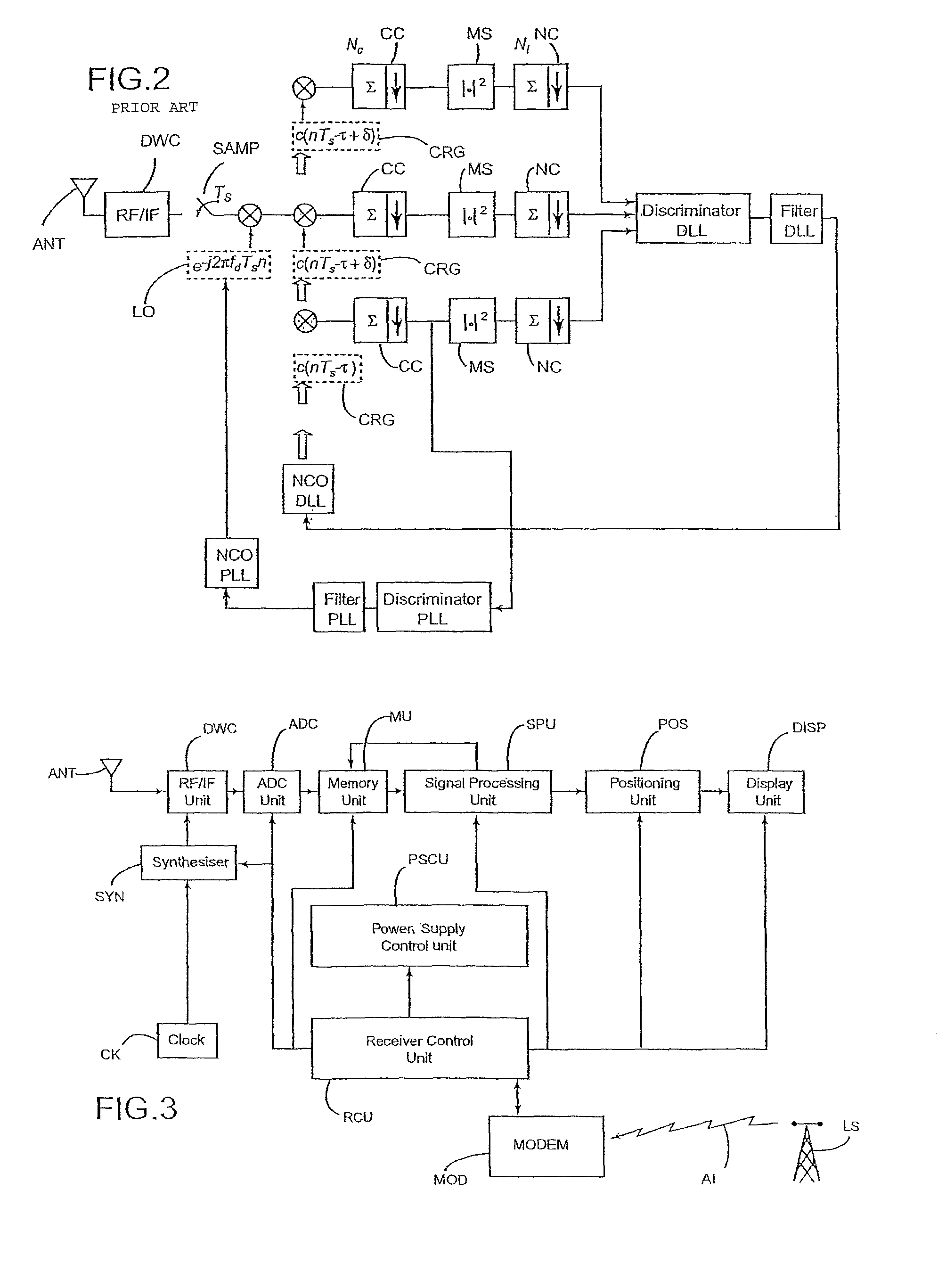Method of processing positioning signals, in particular for indoor applications
a positioning signal and indoor application technology, applied in surveying, navigation, instruments, etc., can solve the problems of inability to demodulate navigation messages, high attenuation and blockage, and conventional gnss signal processing and positioning algorithms fail, so as to achieve efficient and accurate estimation of code delays
- Summary
- Abstract
- Description
- Claims
- Application Information
AI Technical Summary
Benefits of technology
Problems solved by technology
Method used
Image
Examples
first embodiment
[0064]this processing method is schematically represented by the flow-chart of FIG. 4. In this embodiment, the Signal Processing Units stores a list of all the satellite emitters in view from the present location, the identification of their modulating codes and their approximate carrier frequency shift (subsequently referred to as “Doppler frequency” even if, as already pointed out, it is not only due to Doppler effect). This information is obtained from the assistance data and passed to the Signal Processing unit through the Receiver Control unit. Assistance data are extremely helpful in simplifying the subsequent signal processing, as only the modulating codes of in-view satellite emitters and frequency shifts in a limited range around the approximate Doppler frequencies need to be searched for. However, the method of the invention can also apply to autonomous positioning (without assistance data): in this case, the “list of in-view satellite emitters” comprises all the emitters ...
third embodiment
[0146]A third embodiment, reducing the computational burden on the Signal Processing Unit will now be described with reference to FIG. 9. This embodiment is not suitable to “stand alone” operation, since it relies on assistance information coming from a nearby, terrestrial Location Server. Moreover, this assistance information has to comprise, beside a list of in-view satellite emitters, a list of the code delays for said satellite emitters (or at least of the differences in code delay between the emitters).
[0147]The third embodiment of the invention comprises using the method of the first or second embodiment until a “reference” near-far free satellite emitter is acquired and recognized as such. From that point on, the much simpler method of FIG. 9 can be used.
[0148]At step 90, assistance information is used to determine a comparatively narrow set of trial code delay values: in fact, the difference between the code delay of a given satellite emitter and that of the “reference” sate...
PUM
 Login to View More
Login to View More Abstract
Description
Claims
Application Information
 Login to View More
Login to View More - R&D
- Intellectual Property
- Life Sciences
- Materials
- Tech Scout
- Unparalleled Data Quality
- Higher Quality Content
- 60% Fewer Hallucinations
Browse by: Latest US Patents, China's latest patents, Technical Efficacy Thesaurus, Application Domain, Technology Topic, Popular Technical Reports.
© 2025 PatSnap. All rights reserved.Legal|Privacy policy|Modern Slavery Act Transparency Statement|Sitemap|About US| Contact US: help@patsnap.com



